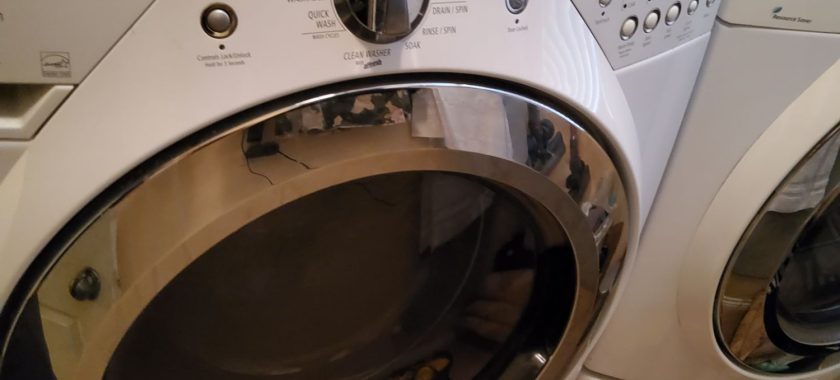Modern tumble dryers have come a long way from their basic predecessors, thanks to the integration of smart technology. One of the most crucial advancements in dryer efficiency and performance is the inclusion of humidity and temperature sensors. These sensors play a key role in optimizing the drying process, improving energy efficiency, preventing fabric damage, and enhancing user convenience.
How Humidity Sensors Work in a Tumble Dryer
Humidity sensors, often referred to as moisture sensors, measure the level of moisture in the laundry during the drying cycle. Instead of relying on a timer, which may either overdry or underdry clothes, these sensors provide real-time feedback to the dryer’s control system.
When clothes are wet, the sensor detects high humidity levels inside the drum. As moisture evaporates, the sensor continuously measures the humidity and signals the dryer to adjust the heat and airflow accordingly. Once the clothes reach the desired dryness level, the sensor instructs the appliance to stop or transition to a cool-down phase.
Benefits of Humidity Sensors in Dryers
- Energy Efficiency: Traditional dryers operate on pre-set timers, leading to unnecessary energy consumption. Humidity sensors help reduce drying time by shutting off the cycle as soon as clothes are dry, minimizing energy waste.
- Fabric Protection: Overdrying can damage fabric fibers, causing shrinkage and wear. With humidity sensors, garments are exposed to heat only for as long as necessary, preserving their quality.
- Time-Saving Convenience: Users no longer need to guess drying times or check clothes repeatedly. The sensor ensures the perfect level of dryness without manual intervention.
- Prevention of Overheating: By stopping the cycle at the right time, the sensor prevents excessive heat exposure, reducing the risk of fires or appliance malfunctions.
The Role of Temperature Sensors in Dryers
While humidity sensors monitor moisture, temperature sensors regulate the heat inside the dryer drum. These sensors ensure that the appliance maintains an optimal temperature range throughout the drying cycle.
The sensor continuously measures the internal heat levels and adjusts the heating element accordingly. If the temperature exceeds safe levels, the sensor signals the control system to reduce the heat or activate the cooling function.
Why Temperature Sensors Are Essential
- Prevention of Fabric Damage: Some fabrics, such as wool and synthetic fibers, are highly sensitive to heat. Temperature sensors prevent overheating, ensuring delicate fabrics remain undamaged.
- Enhanced Safety: Dryers that overheat pose a fire hazard. Temperature sensors prevent the risk of overheating by maintaining safe operating conditions.
- Energy Savings: By adjusting the heat levels dynamically, temperature sensors contribute to energy efficiency and reduce electricity bills.
- Consistent Drying Results: Fluctuations in temperature can lead to uneven drying. The sensor ensures a steady heat supply, preventing damp spots or overly dry clothes.
Common Issues with Dryer Sensors
While humidity and temperature sensors greatly improve performance, they are not immune to malfunctions. Some common issues include:
- Sensor Buildup: Lint and fabric softener residue can accumulate on the sensors, reducing their accuracy. Regular cleaning of the sensor area is essential.
- Faulty Readings: If the sensor fails to detect moisture correctly, the dryer may stop prematurely or continue running even when clothes are dry.
- Temperature Fluctuations: A malfunctioning temperature sensor can cause the dryer to overheat or not heat up at all, leading to inefficient drying cycles.
How to Maintain Your Dryer Sensors
- Clean the Sensor Regularly: Wipe the moisture sensor with a soft cloth and mild soap to remove lint buildup.
- Check for Error Codes: Many modern dryers display error codes when sensors malfunction. Refer to the user manual for troubleshooting steps.
- Inspect Wiring and Connections: Loose or damaged wires can interfere with sensor functionality. If your dryer behaves unpredictably, professional inspection may be necessary.
When to Call a Professional for Dryer Repairs
If your dryer takes too long to dry, stops prematurely, or overheats, the humidity or temperature sensors could be faulty. Instead of struggling with ineffective drying cycles, trust the experts at Chula Vista Appliance Repair Company to diagnose and repair the issue. Our skilled technicians will ensure your dryer functions optimally, saving you time, energy, and frustration. Contact us today for fast and reliable appliance repair services.
Contact us
(619) 880-5508


